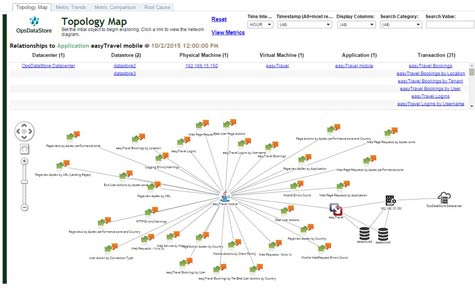Most IT organizations today have a plethora of IT management tools at their disposal that wind up creating their own silos of data that ultimately need to be managed. With the rise of Big Data, however, the time has come to eliminate all those silos of data using a common backend that any IT management tool can access.
With that goal in mind, OpsDataStore today unveiled a namesake backend Big Data platform that comes complete with a data model to keep track of the relationship between objects right from the moment those objects are ingested into a backend system based on the Cassandra database, Apache Spark in-memory compute engine and the Kafka message bus.
Rather than compete with other providers of IT management tools, OpsDataStore CEO Bernd Harzog says OpsDataStore is trying to make it simpler for IT organizations to correlate information from different IT sources to resolve problems faster.
To that end, the first third-party vendors to sign up to participate in the OpsDataStore ecosystem include AppDynamics, Dynatrace and ExtraHop. Via REST application programming interfaces (APIs) or SQL using ODBC interfaces, those tools can launch queries against data stored in the OpsDataStore platform. In addition, both Qlik and Tableau have agreed to integrate their respective tools to provide IT organizations with visualization software to access a topology map generated by OpsDataStore.
Harzog says OpsDataStore aims for the first time to provide IT organizations with a 360-degree view of their operations and tasks spanning application performance management, IT operations management, network management, infrastructure performance management, IT operations analytics, cloud automation, IT financial management and service management. The end result, says Harzog, is that instead of simply playing a blame game where various members of the IT organization try to prove their respective innocence in a war room, the IT organization can remediate issues much faster.
Of course, none of that means that any of the multiple tools that IT organizations regularly rely on are going away any time soon. But it does mean that not only will they have more access to data than ever, the information those tools surface will be much more relevant.




